Government of New Zealand has been posted the following article in the website. Address to the Second Joint Ministerial Conference of the Paris and Tokyo Memoranda of Understanding on Port State Control.(Website of Government of New Zealand )
This article includes "This will strengthen the circle of responsibility and help us to work together towards elimination of the problem of sub-standard shipping. "
On behalf of Japan, Mr. Tadao Iwasaki, Ministry of Land, Intrastructiure and Transport, declared the following.
PSC Officers of the Paris MOU reveal no improvement of seafarers’ living and working conditions (Website of The Website for Greek Shipping) says "Ships detained for serious ILO deficiencies were mostly also detained for defects in safety and pollution prevention areas. This underlines again the vital relation between the human element and all areas of maritime safety and environmental protection. This issue was also raised by Ministers during the Second Joint Ministerial Conference of Paris and Tokyo MOU’s held in Vancouver, Canada (November 2004)."
There has been many things to be improved. Many countres recoginzed and understood "Strengthening the Circle of Responsibility"(IMO Website)
Port State Control(IMO WEBSITE)
says ;
"Port State Control (PSC) is the inspection of foreign ships in national ports to verify that the condition of the ship and its equipment comply with the requirements of international regulations and that the ship is manned and operated in compliance with these rules.
Many of IMO's most important technical conventions contain provisions for ships to be inspected when they visit foreign ports to ensure that they meet IMO requirements.
These inspections were originally intended to be a back up to flag State implementation, but experience has shown that they can be extremely effective, especially if organized on a regional basis."
Port State Control of Ministry of Land, Intrastructiure and Transport has not been coorporative to some flag states. Head Office of Port State Control does not evern understand flag state inspections. They do not know what is a difference between a flag state inspectior and a surveyor who belongs to RO (Recognaized Organization) that has been authorized to survey on behalf of flag states.
RESOLUTION A.789(19) SPECIFICATIONS ON THE SURVEY AND CERTIFICATION FUNCTIONS OF RECOGNIZED ORGANIZATIONS ACTING ON BEHALF OF THE ADMINISTRATION (IMO)
Article 94 Duties of the flag State United Nations Convention on the Law of the Sea (UNCLOS) from MAIFA
They do not try to understand the differece. They close their eyes and shut their ears so that they do not see and hear.
This is ture. Shame on Japan and Japan PSC. I feel embarassed that Japan and Japan PSC have the attitude above.
One example is that many Cambodia flag vessels the berth exporting scrap metals at Hakata Port, Fukuoka, Japan. Many Cambodia fag vessels come to this berth. However, there were no detained Cambodia flag vessels. I conclude thia that PSCOs have not inspected theese vessels properly like another Japan PSCO who detain substandard vessels at other ports in Japan due to the lacks of motivation of proper inspection or due to the lacks of knowledges and experiences of Japan PSCOs at Hakata port. Please think of any other reasons if you can think of. There is not much reasons to think.
The below pictures are vessels that Japan PSCO inspected. However, they did not point out as deficiencies. Are these so difficult to decide if these are deficiencies or not. The answer is "NO". Can anyone think reasons why there were not pointed out? I would say that some of them are lazy or that they are not experienced. Overlooking the below deficiencies would be very shocked to some foregin people. However, this is a part of a real thing in Japan.
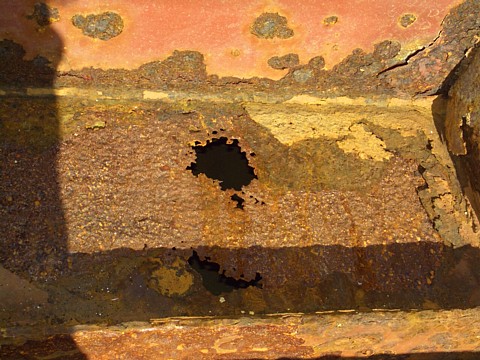
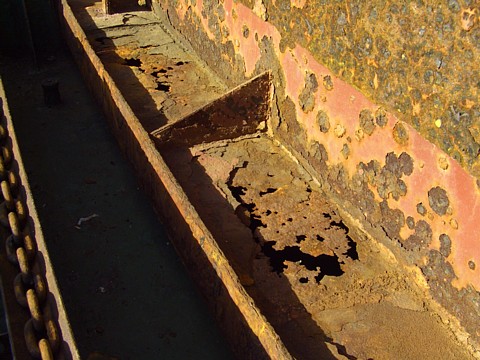
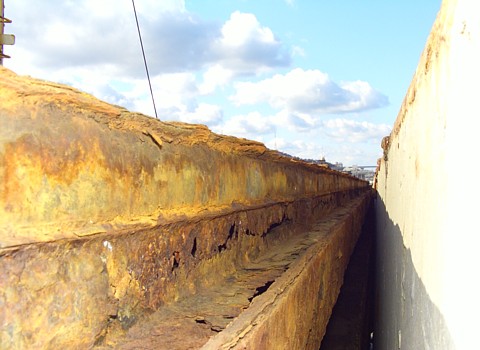
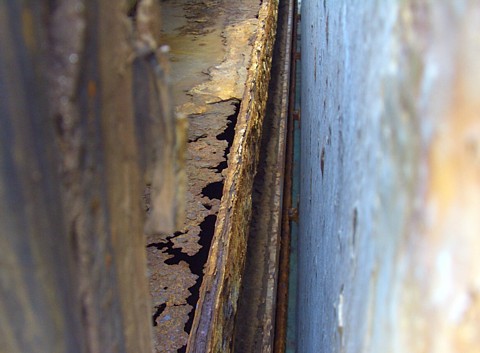
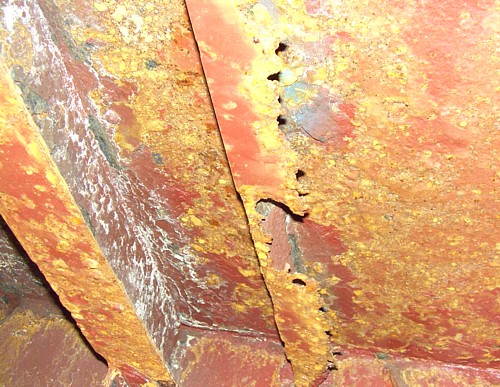
Sample 3 (2010)
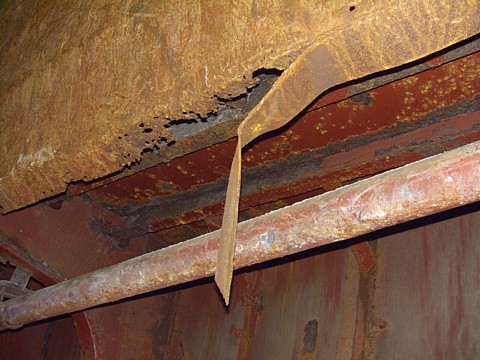
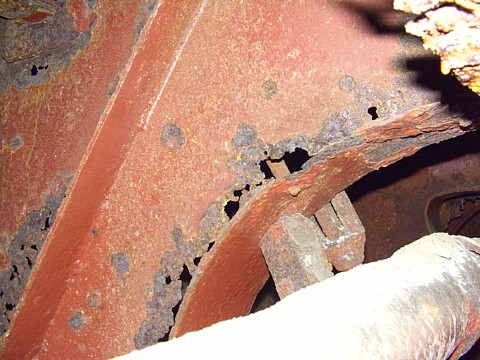
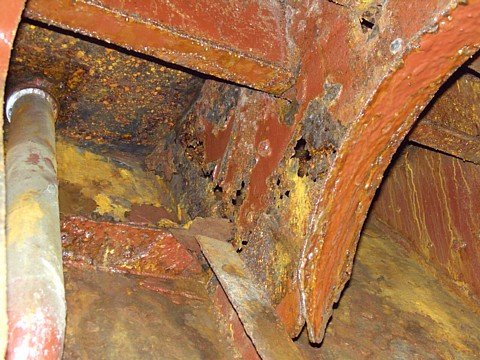
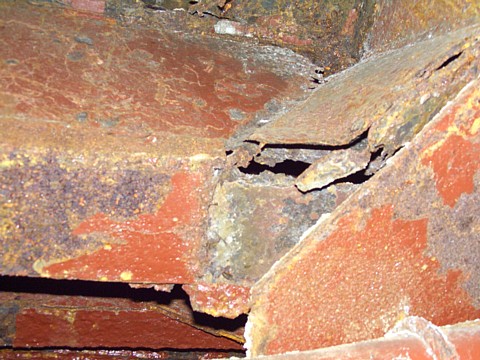
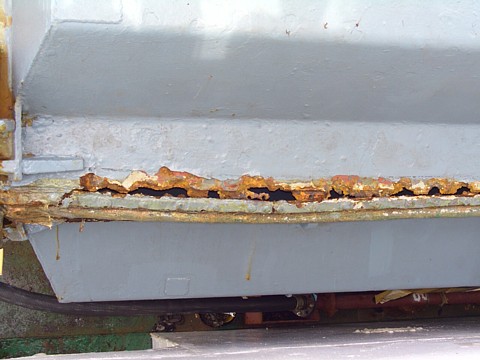
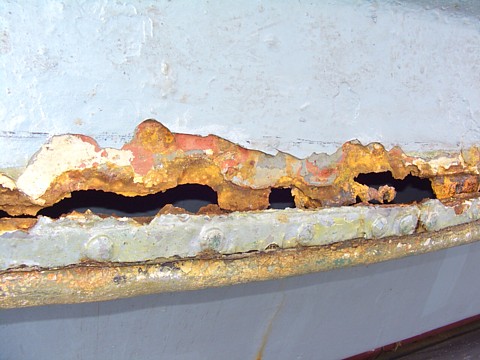
Sample 4
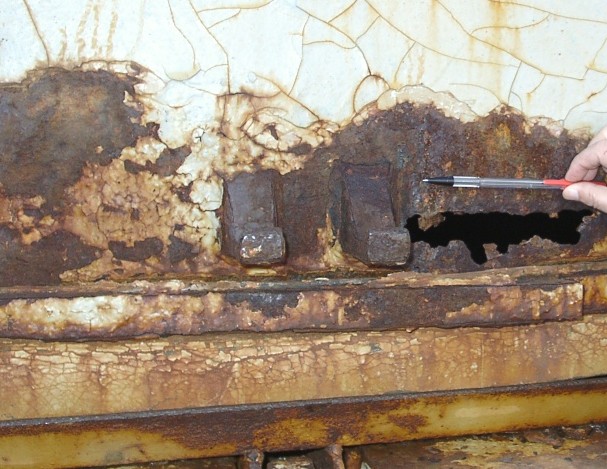
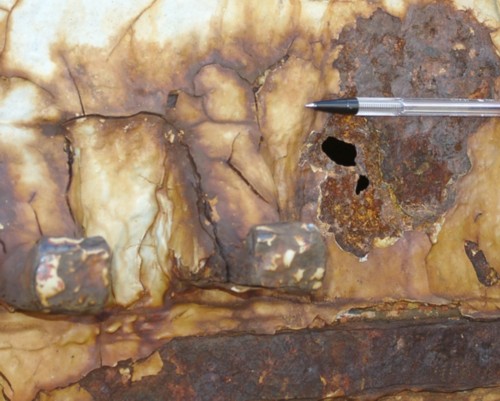
Sample 5
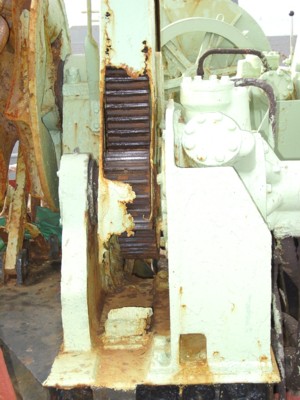
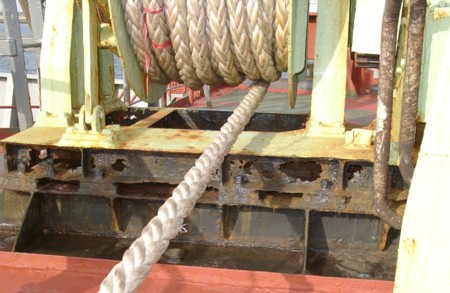
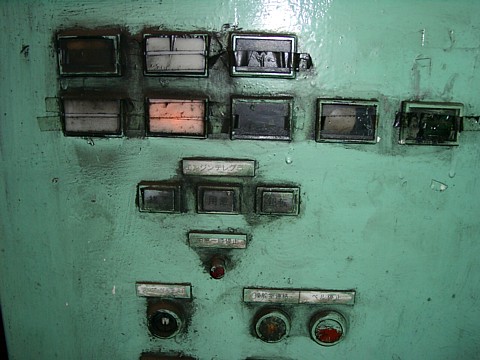
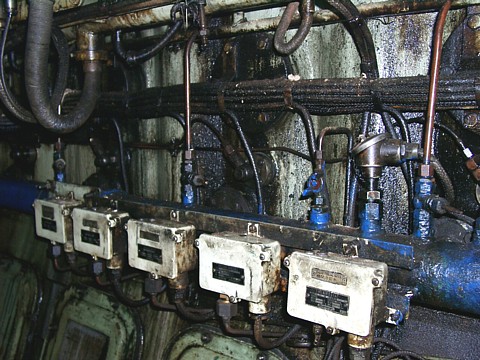
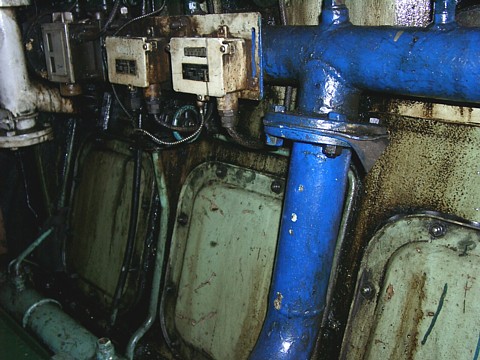
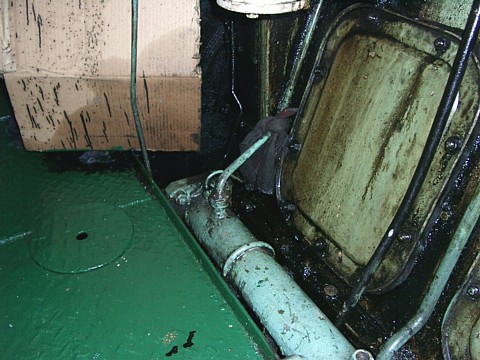
Sample 7 (2008)
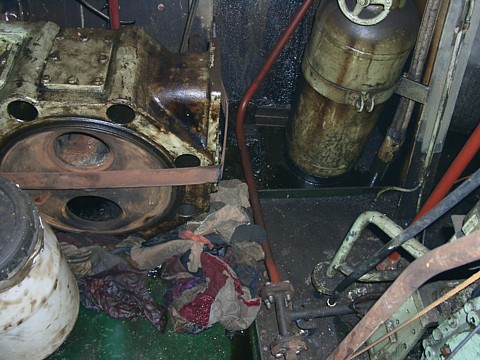
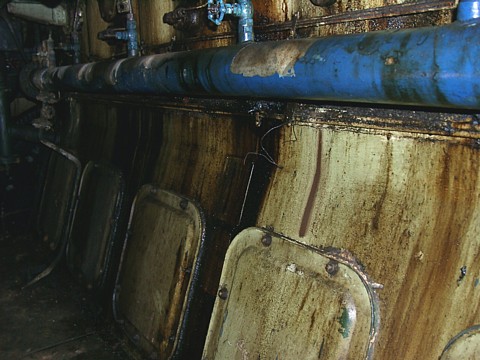
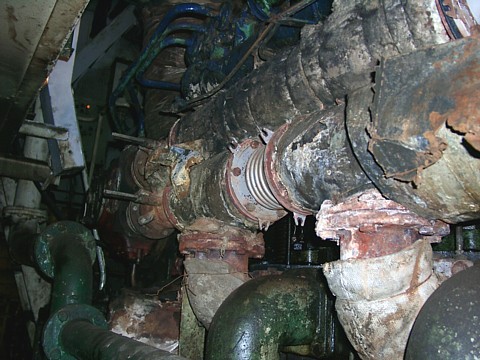
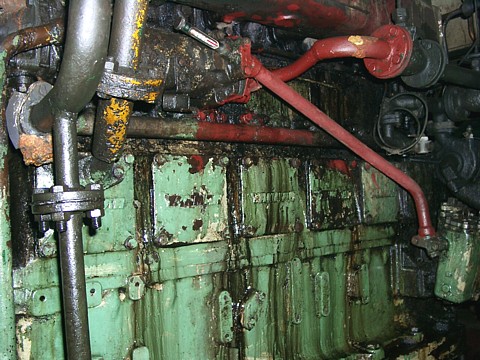
Next, most of detained ships in Japan, Korea, and China area were built in Japan as coaster. Japan Port State Control Officers should know items that do not comply with International Conventions (SOLAS, MARPOL, LLC and others) since most of them were Japan Government Marine surveyors who surveyed these Japan coaster during constraction stages and dry-docking survery and issued certificates to them.
Now Matitime devision of Ministry of Land, Intrastructiure and Transport have been certified for ISO 9001. This means that Japan Government Marine surveyors survey according to the quality manual. In other words, they must be familiar about items that International Conventions are not required to comply as a Japan flag coaster that does not engaged in Interantional trade.
In addition, many ships who are ex-Japan flag coasters increase "Deadweight" after a change of flag and navigation area to International trade from coasting/smooth water area. Is it funny? Changing the navigation area to International trade from coasting/smooth water area ends up with gaining more deadweight. What about a ship strength? What about the stability? SOLAS and LLC do not give clear definitions of a ship strength and stability. Japan Port State Control Officers who were Japan Government Marine surveyors could say something about this. Unfortunately, they won't say much and they won't detian ships with these problems. I belive that substandard ships will not be eliminated at least by Japan Port State Control Officers because of the above reasons although Mr. Tadao Iwasaki, Ministry of Land, Intrastructiure and Transport said good things.
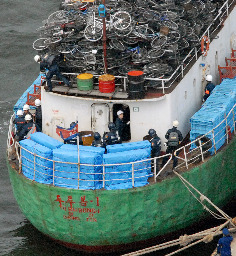
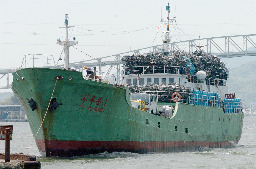
Japan Port State Control Officers who were Japan Government Marine surveyors should be able to point out deficiencies to ex-Japan flag coasters who are registered in foreign flags in Interantional trades. However, 70 to more percentages of Japan Port State Control Officers haven't pointed out these deficiences. I don't know reasons. I also feel shame about this fact.
Japan must change and Ministry of Foreign Affairs of Japan must recognize this problem since they writes a Contribution of Japan to Maritime in their website. They must see and understand what's been going on and think what they can do to solve problems. Closing their eyes and shutting their ears will not do any good for better.
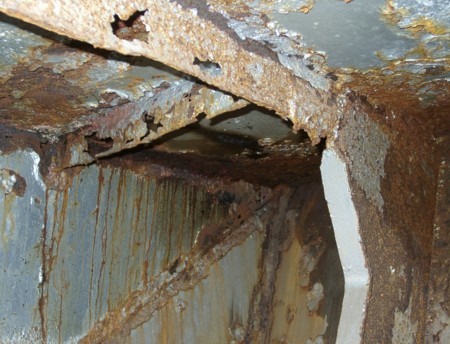
JAPAN Port State Control Officers allowed the above/below cargo securing.
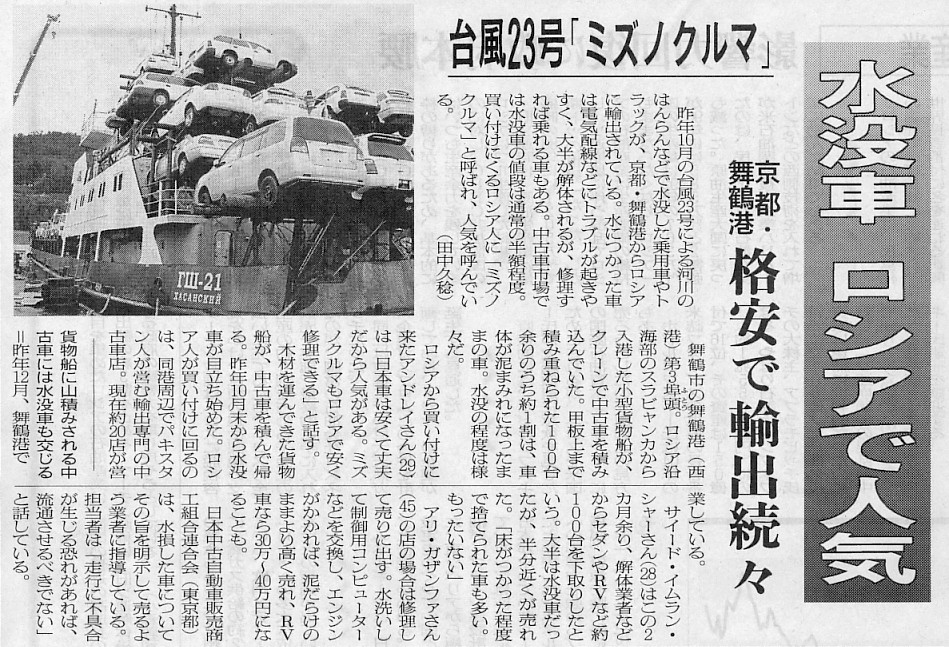
Advises to Port Sate Controls who want to eliminate substandard ships in the area ex-Japan coasters trade!
I would like to conribute to eliminate substandard ships in Asian areas. I thought that Japan PSCO would make positive changes since Japan and Mr. Tadao Iwasaki declared "Strengthening the Circle of Responsibility"(IMO Website) during Second Joint Ministerial Conference of the Paris and Tokyo Memoranda of Understanding on Port State Control.However, I was wrong. There are stil many substandard ships comming to Japan ports and leaving from Japan ports. More than five (5) years past since Second Joint Ministerial Conference of the Paris and Tokyo Memoranda of Understanding on Port State Control Canada, November 2-3, 2004.
I would like to share my knowlege if young Port State Control Officers are not educated about below facts. In the Asian areas many subustandard vessels are ex-Japan flag coasters flying various flags listed in a black and grey flags. If you are a good Port State Control Officer with techinical back-grounds, you already notice about this. The reasons why they are subustandar shps;
1. Japan flag coasters were not designed and built to comply with International Conventions such as SOLAS.
(They have problems such as stability related problems such as sill height, air pipe height, and small hatch height and fire integrity problems
such as engine room, engine casing and navigation bridge deck. Another problems are life rafts, GMDSS equipments, life saving appliances.)
2. Gross tonnage based on Japan tonnage measurement calculatin can't be used for International Conventions when vessel's gross tonnage is
below 1600 tons and that ships keel laying is after 18 July 1994.
(You can look at a supplement to IOPP where Date on which keel was laid or ship was at a similar stage of construction to see if vessels are
officially entiled to use IMO Resolution A.494(XII).
Ex-Japan flag coasters have more SOLAS and Load line conventions related problems. The above items must be checked and pointed out when PSC inspections are carried out. Unfortunetely many Japan PSCOs failed to check them and to point out as deficiencies. I hope that PSCOs who access to this site learn facts and apply to their PSC inspection to eliminate substandard ships.
I will go more detailes about deficiencies of ex-Japan flag coasters when no additional works and equipments are not provided.
1. General Corgo Vessels:
Fire integrity are not done for Engie room and Nav. Bri. deck. This check should be done together with Fire control plan. Some ships have the fire control plan showing decks and walls that fire integrity were done. However, there is a good chance that they don't have fire integrity as shown in the fire control plan. When you go into the engine room and look at the ceiling and when you are going to Nav. Bri. deck and look at the ceiling where the switch board is on, you can easily check if fire integrity is done or not. I don't know if Japan PSCOs know this checking method, however, many Japan PSCOs haven't pointed out these kinds of deficiencies many often in the past inspection. I assume that Japan PSCO who knows about these kinds of deficiencies does not inform or share with another PSCOs or that the head of Japan PSCO is not serious to eliminate subustandard ships. If you have a chance to talk to Japan PSCOs in a job training or meeting, it is good to ask. Maybe they don't know it.
Inclining test is required by SOLAS. But Japan flag coasters are not required to carry out the inclining test. Therefore, their stability bookket does not include the information of the inclining test unless the ship owner requires. When these ships are sold and registered in a foreign flag to engige in intenational trading, the inclining test shall be done to ships above 500 GRT (ITC) to prepare a new stability booklet unless the ships can use IMO Resolution A.494(XII). Many Japan PSCOs haven't pointed out these kinds of deficiencies many often in the past inspection. I assume that Japan PSCO who knows about these kinds of deficiencies does not inform or share with another PSCOs or that the head of Japan PSCO is not serious to eliminate subustandard ships. If you have a chance to talk to Japan PSCOs in a job training or meeting, it is good to ask. Maybe they don't know it.
ISM Code
According to
MSC.1/Circ.1231(NK website)
Cargo ships and special purposes ships of 500 gross tonnage and upwards engaged on international voyages were not required to comply with the provisions of SOLAS chapter IX and the ISM Code, on the grounds that the provisions of resolution A.494(XII) on the Revised Interim Scheme for Tonnage Measurement for Certain Ships were applicable to them.
Cargo ships, special purpose ships and Companies operating such ships which have not been required to comply with the Requirements shall comply with the Requirements not later than 1 January 2010.
Now ex-Japan flag ships (ex-499GRT type) above 500GRT shall keep SMC and a copy of DOC on board.
According to
ISM code,
1.4 Functional requirements for a safety-management system
Every Company should develop, implement and maintain a safety management system (SMS) which includes the following functional requirements:
.1 a safety and environmental-protection policy;
.2 instructions and procedures to ensure safe operation of ships and protection of the environment in
compliance with relevant international and flag State legislation;
.3 defined levels of authority and lines of communication between, and amongst, shore and
shipboard personnel;
.4 procedures for reporting accidents and non- conformities with the provisions of this Code;
.5 procedures to prepare for and respond to emergency situations ;and
.6 procedures for internal audits and management reviews.
"instructions and procedures to ensure safe operation of ships and protection of the environment in compliance
with relevant international and flag State legislation" is very important for PSCO to understand.
The ex-499GRT type Japan flag ships shall comply with rules and regulations that she is flying. That means that PSCO
can check if the ship is complied with flag state rules and regulations when her ceriticiates are not issued based on
International conventions such as SOLAS. PSCO must remember that survey performance can't be credited oftern when the survey company is
not IACS member. PSCO can check the performance of RO (Recognized Organization: Survey company) through annual reports from
TOKYO MOU if he or she does not have much information about ROs.
PSCO can ask Master about the flag state regulation. ISM company must provide some kinds of information to Master to check or read.
Otherwise there is no way to check if the ship is complied with flag State legislation. Even if PSCO does not have enough knowledge
about various flag requirements, he or she can do the above. PSCO can write "The ISM company does not provide flag state rules and regulations for Master."
when Master can't provide them. PSCO can check if the ship is complied with flag state rules and regulations if Master provides domestic regulation such as
Rules for vessels under 500 GRT in service outside the jurisdictional water of the Republic of Panama in the case of Panama flag vessels.
Japan PSCO haven't checked that. This is, I assume, why Japan PSCOs detained less vessels compared with Korea and China PSCOs. Japan PSCOs are not good except a few good PSCOs. I hope that other PSCO can learn more about this site without having expensive training course to eliminate substandard ships.
I will up-date more information times to times.
リンク先の中には繋がらないものもあると思いますが、ご容赦ください。